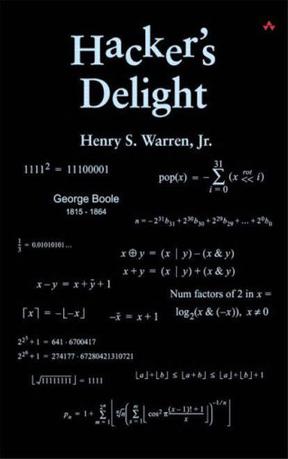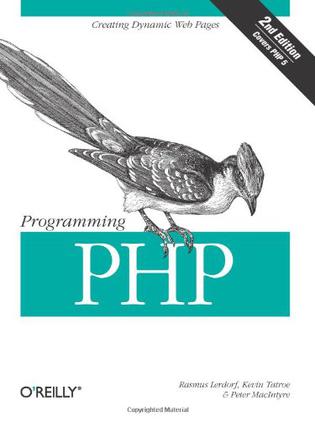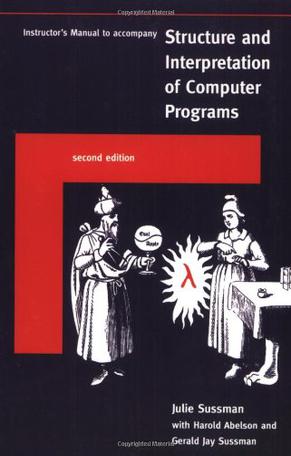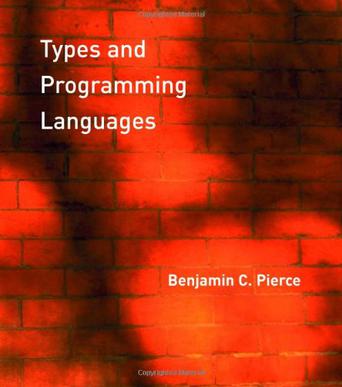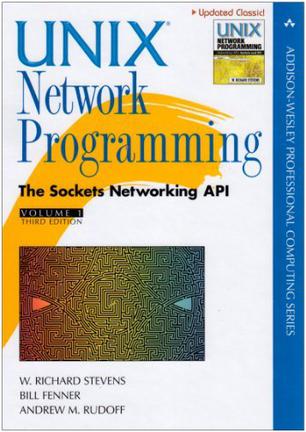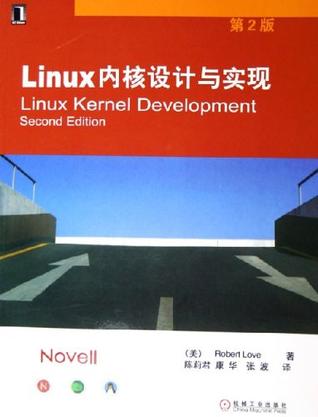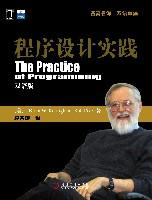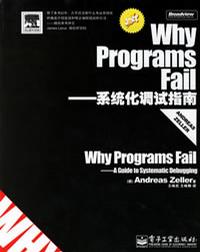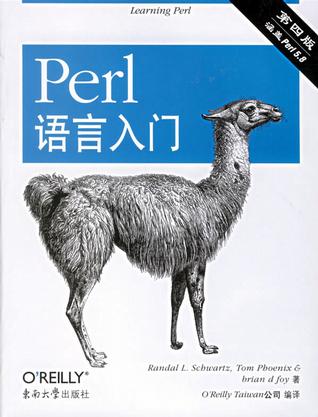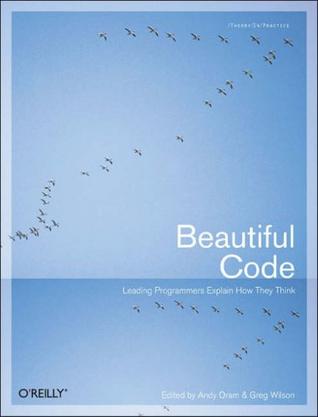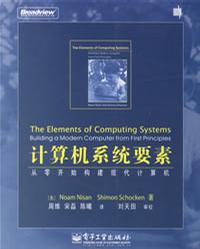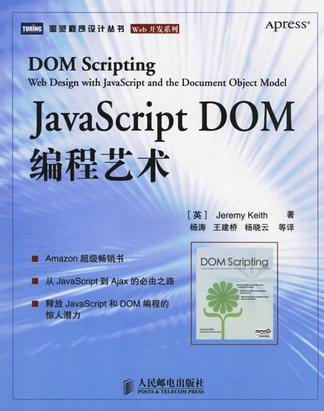欢迎来到相识电子书!
标签:编程
-
Programming in Lua, Second Edition
Lua is the language of choice for anyone who needs a scripting language that is simple, efficient, extensible, portable, and free. Currently, Lua is being used in areas ranging from embedded systems to Web development and is widely spread in the game industry, where knowledge of Lua is an indisputable asset. "Programming in Lua" is the official book about the language, giving a solid base for any programmer who wants to use Lua. Authored by Roberto Ierusalimschy, the chief architect of the language, it covers all aspects of Lua 5---from the basics to its API with C---explaining how to make good use of its features and giving numerous code examples. "Programming in Lua" is targeted at people with some programming background, but does not assume any prior knowledge about Lua or other scripting languages. This Second Edition updates the text to Lua 5.1 and brings substantial new material, including numerous new examples, a detailed explanation of the new module system, and two new chapters centered on multiple states and garbage collection. -
Hacker's Delight
A collection useful programming advice the author has collected over the years; small algorithms that make the programmer's task easier. * At long last, proven short-cuts to mastering difficult aspects of computer programming * Learn to program at a more advanced level than is generally taught in schools and training courses, and much more advanced than can be learned through individual study/experience. * An instant cult classic for programmers! Computer programmers are often referred to as hackers -- solitary problem solvers engrossed in a world of code as they seek elegant solutions to building better software. While many view these unique individuals as "madmen," the truth is that much of the computer programmer's job involves a healthy mix of arithmetic and logic. In Hacker's Delight, veteran programmer Hank Warren shares the collected wisdom -- namely tips and tricks -- from his considerable experience in the world of application development. The resulting work is an irresistible collection that will help even the most seasoned programmers better their craft. Henry S. Warren Jr. has had a 40-year career with IBM, spanning the computer field from the IBM 704 to PowerPC. He has worked on various military command and control systems, and on the SETL project under Jack Schwartz at NYU. Since 1973 he has been in IBM's Research Division at Yorktown Heights, New York. Here he has done compiler and computer architecture work on the 801 computer and its several variants through PowerPC. Presently he is working on the Blue Gene petaflop computer project. He received his Ph.D. in Computer Science from the Courant Institute at New York University in 1980. -
Programming PHP
Programming PHP, 2nd Edition, is the authoritative guide to PHP 5 and is filled with the unique knowledge of the creator of PHP (Rasmus Lerdorf) and other PHP experts. When it comes to creating websites, the PHP scripting language is truly a red-hot property. In fact, PHP is currently used on more than 19 million websites, surpassing Microsoft's ASP .NET technology in popularity. Programmers love its flexibility and speed; designers love its accessibility and convenience. As the industry standard book on PHP, all of the essentials are covered in a clear and concise manner. Language syntax and programming techniques are coupled with numerous examples that illustrate both correct usage and common idioms. With style tips and practical programming advice, this book will help you become not just a PHP programmer, but a good PHP programmer. Programming PHP, Second Edition covers everything you need to know to create effective web applications with PHP. Contents include: * Detailed information on the basics of the PHP language, including data types, variables, operators, and flow control statements * Chapters outlining the basics of functions, strings, arrays, and objects * Coverage of common PHP web application techniques, such as form processing and validation, session tracking, and cookies * Material on interacting with relational databases, such as MySQL and Oracle, using the database-independent PEAR DB library and the new PDO Library * Chapters that show you how to generate dynamic images, create PDF files, and parse XML files with PHP * Advanced topics, such as creating secure scripts, error handling, performance tuning, and writing your own C language extensions to PHP * A handy quick reference to all the core functions in PHP and all the standard extensions that ship with PHP Praise for the first edition: "If you are just getting into the dynamic Web development world or you are considering migrating from another dynamic web product to PHP, Programming PHP is the book of choice to get you up, running, and productive in a short time." --Peter MacIntrye, eWeek "I think this is a great book for programmers who want to start developing dynamic websites with PHP. It gives a detailed overview of PHP, lots of valuable tips, and a good sense of PHP's strengths." --David Dooling, Slashdot.org -
Write Great Code
If you've asked someone the secret to writing efficient, well-written software, the answer that you've probably gotten is "learn assembly language programming." By learning assembly language programming, you learn how the machine really operates and that knowledge will help you write better high-level language code. A dirty little secret assembly language programmers rarely admit to, however, is that what you really need to learn is machine organization, not assembly language programming. Write Great Code Vol I, the first in a series from assembly language expert Randall Hyde, dives right into machine organization without the extra overhead of learning assembly language programming at the same time. And since Write Great Code Vol I concentrates on the machine organization, not assembly language, the reader will learn in greater depth those subjects that are language-independent and of concern to a high level language programmer. Write Great Code Vol I will help programmers make wiser choices with respect to programming statements and data types when writing software, no matter which language they use. -
Instructor's Manual t/a Structure and Interpretation of Computer Programs
This instructor's manual and reader's guide accompanies the second edition of Structure and Interpretation of Computer Programs, by Harold Abelson and Gerald Jay Sussman with Julie Sussman. It contains discussions of exercises and other material in the text as well as supplementary material, additional examples and exercises, and teaching suggestions. An appendix summarizes the Scheme programming language as used in the text, showing at what point in the text each element of Scheme is introduced. -
Types and Programming Languages
A type system is a syntactic method for automatically checking the absence of certain erroneous behaviors by classifying program phrases according to the kinds of values they compute. The study of type systems--and of programming languages from a type-theoretic perspective -- -has important applications in software engineering, language design, high-performance compilers, and security.This text provides a comprehensive introduction both to type systems in computer science and to the basic theory of programming languages. The approach is pragmatic and operational; each new concept is motivated by programming examples and the more theoretical sections are driven by the needs of implementations. Each chapter is accompanied by numerous exercises and solutions, as well as a running implementation, available via the Web. Dependencies between chapters are explicitly identified, allowing readers to choose a variety of paths through the material.The core topics include the untyped lambda-calculus, simple type systems, type reconstruction, universal and existential polymorphism, subtyping, bounded quantification, recursive types, kinds, and type operators. Extended case studies develop a variety of approaches to modeling the features of object-oriented languages. -
Unix Network Programming, Volume 1
This is THE guide to UNIX network programming APIs. Whether you write Web servers, client/server applications, or any other network software, you need to understand networking APIS-especially sockets in greater detail than ever before. You need UNIX Network Programming, Volume 1, Third Edition. In this book, the Authors offer unprecedented, start-to-finish guidance on making the most of sockets, the de facto standard for UNIX network programming with APIs - as well as extensive coverage of the X/Open Transport Interface (XTI). -
Text Processing in Python
Text Processing in Python describes techniques for manipulation of text using the Python programming language. At the broadest level, text processing is simply taking textual information and doing something with it. This might be restructuring or reformatting it, extracting smaller bits of information from it, or performing calculations that depend on the text. Text processing is arguably what most programmers spend most of their time doing. Because Python is clear, expressive, and object-oriented it is a perfect language for doing text processing, even better than Perl. As the amount of data everywhere continues to increase, this is more and more of a challenge for programmers. This book is not a tutorial on Python. It has two other goals: helping the programmer get the job done pragmatically and efficiently; and giving the reader an understanding - both theoretically and conceptually - of why what works works and what doesn't work doesn't work. Mertz provides practical pointers and tips that emphasize efficent, flexible, and maintainable approaches to the textprocessing tasks that working programmers face daily. From the Back Cover: Text Processing in Python is an example-driven, hands-on tutorial that carefully teaches programmers how to accomplish numerous text processing tasks using the Python language. Filled with concrete examples, this book provides efficient and effective solutions to specific text processing problems and practical strategies for dealing with all types of text processing challenges. Text Processing in Python begins with an introduction to text processing and contains a quick Python tutorial to get you up to speed. It then delves into essential text processing subject areas, including string operations, regular expressions, parsers and state machines, and Internet tools and techniques. Appendixes cover such important topics as data compression and Unicode. A comprehensive index and plentiful cross-referencing offer easy access to available information. In addition, exercises throughout the book provide readers with further opportunity to hone their skills either on their own or in the classroom. A companion Web site (http://gnosis.cx/TPiP) contains source code and examples from the book. Here is some of what you will find in thie book: * When do I use formal parsers to process structured and semi-structured data? Page 257 * How do I work with full text indexing? Page 199 * What patterns in text can be expressed using regular expressions? Page 204 * How do I find a URL or an email address in text? Page 228 * How do I process a report with a concrete state machine? Page 274 * How do I parse, create, and manipulate internet formats? Page 345 * How do I handle lossless and lossy compression? Page 454 * How do I find codepoints in Unicode? Page 465 -
The Seasoned Schemer
drawings by Duane Bibbyforeword and afterword by Guy L. Steele Jr.The notion that "thinking about computing is one of the most exciting things the human mind can do" sets both The Little Schemer (formerly known as The Little LISPer) and its new companion volume, The Seasoned Schemer, apart from other books on LISP. The authors' enthusiasm for their subject is compelling as they present abstract concepts in a humorous and easy-to-grasp fashion. Together, these books will open new doors of thought to anyone who wants to find out what computing is really about. The Little Schemer introduces computing as an extension of arithmetic and algebra;things that everyone studies in grade school and high school. It introduces programs as recursive functions and briefly discusses the limits of what computers can do. The authors use the programming language Scheme, and interesting foods to illustrate these abstract ideas. The Seasoned Schemer informs the reader about additional dimensions of computing: functions as values, change of state, and exceptional cases. The Little LISPer has been a popular introduction to LISP for many years. It had appeared in French and Japanese. The Little Schemer and The SeasonedSchemer are worthy successors and will prove equally popular as textbooks for Scheme courses as well as companion texts for any complete introductory course in Computer Science. -
Linux内核设计与实现
《Linux内核设计与实现》基于Linux2.6内核系列详细介绍Linux内核系统,覆盖了从核心内核系统的应用到内核设计与实现等各方面的内容。主要内容包括:进程管理、系统调用、中断和中断处理程序、内核同步、时间管理、内存管理、地址空间、调试技术等。本书理论联系实践,既介绍理论也讨论具体应用,能够带领读者快速走进Linux内核世界,真正开发内核代码。 本书适合作为高等院校操作系统课程的教材或参考书,也可供相关技术人员参考。 -
程序设计实践
从排错、测试、性能、可移植性、设计、界面、风格和记法等方面,讨论了程序设计中实际的、又是非常深刻和具有广泛意义的思想、技术和方法,它的翻译出版将填补国内目前这方面书籍的空白。《程序设计实践》(双语版)值得每个梦想并努力使自己成为优秀程序员的人参考,值得每个计算机专业的学生和计算机工作者阅读,也可作为程序设计高级课程的教材或参考书。 -
Perl语言入门
Learning Perl, Fourth Edition -
数据结构
《数据结构》(C语言版)是为“数据结构”课程编写的教材,也可作为学习数据结构及其算法的C程序设计的参数教材。 本书的前半部分从抽象数据类型的角度讨论各种基本类型的数据结构及其应用;后半部分主要讨论查找和排序的各种实现方法及其综合分析比较。其内容和章节编排1992年4月出版的《数据结构》(第二版)基本一致,但在本书中更突出了抽象数据类型的概念。全书采用类C语言作为数据结构和算法的描述语言。 本书概念表述严谨,逻辑推理严密,语言精炼,用词达意,并有配套出版的《数据结构题集》(C语言版),便于教学,又便于自学。 本书后附有光盘。光盘内容可在DOS环境下运行的以类C语言描述的“数据结构算法动态模拟辅助教学软件,以及在Windows环境下运行的以类PASCAL或类C两种语言描述的“数据结构算法动态模拟辅助教学软件”。 本书可作为计算机类专业或信息类相关专业的本科或专科教材,也可供从事计算机工程与应用工作的科技工作者参考。 -
Beautiful Code
In this unique work, leading computer scientists discuss how they found unusual, carefully designed solutions to difficult problems. This book lets the reader look over the shoulder of major coding and design experts to see problems through their eyes. -
计算机系统要素
本书通过展现简单但功能强大的计算机系统之构建过程,为读者呈现了一幅完整、严格的计算机应用科学大图景。本书作者认为,理解计算机工作原理的最好方法就是亲自动手,从零开始构建计算机系统。 通过12个章节和项目来引领读者从头开始,本书逐步地构建一个基本的硬件平台和现代软件阶层体系。在这个过程中,读者能够获得关于硬件体系结构、操作系统、编程语言、编译器、数据结构、算法以及软件工程的详实知识。通过这种逐步构造的方法,本书揭示了计算机科学知识中的重要成分,并展示其它课程中所介绍的理论和应用技术如何融入这幅全局大图景当中去。全书基于“先抽象再实现”的阐述模式,每一章都介绍一个关键的硬件或软件抽象,一种实现方式以及一个实际的项目。完成这些项目所必要的计算机科学知识在本书中都有涵盖,只要求读者具备程序设计经验。本书配套的支持网站提供了书中描述的用于构建所有硬件和软件系统所必需的工具和资料,以及用于12个项目的200个测试程序。 全书内容广泛、涉猎全面,适合计算机及相关专业本科生、研究生、技术开发人员、教师以及技术爱好者参考和学习。 -
JavaScript DOM编程艺术
本书讲述了JavaScript和DOM的基础知识,但重点放在DOM编程技术背后的思路和原则:预留退路、循序渐进和以用户为中心等,这些概念对于任何前端Web开发工作都非常重要。本书将这些概念贯穿在书中的所有代码示例中,使你看到用来创建图片库页面的脚本、用来创建动画效果的脚本和用来丰富页面元素呈现效果的脚本,最后结合所讲述的内容创建了一个实际的网站。 本书适合Web设计师和开发人员阅读。 -
The Standard C Library
Prentice Hall's most important C programming title in years. A companion volume to Kernighan & Ritchie's C PROGRAMMING LANGUAGE. A collection of reusable functions (code for building data structures, code for performing math functions and scientific calculations, etc.) which will save C programmers time and money especially when working on large programming projects. The C Library is part of the ANSI (American National Standard Institute) for the C Language. This new book contains the complete code for the library. It covers elements of the library with which even the most experienced C programmers are not familiar such as internationalization (the ability to write programs that can adapt to different cultural locales, for example, using the C library, programmers can write software that manipulates large character sets such as Kanji). Structured like the Standard C Library, it contains 15 headers declaring or defining all of the names in the library. A separate chapter covers each header, including excerpts from relevant portions of the C Standard showing all codes needed to implement each portion of the library and explaining why it is necessary. The book teaches readers the concepts and design issues associated with library building. Using this book, programemrs will be less likely to re-code something that already exists in a given program. Plauger is one of the world's leading experts on C and the C Library. -
C++编程规范
《C++编程规范:101条规则准则与最佳实践》中,两位知名的C++专家将全球C++界20年的集体智慧和经验凝结成一套编程规范。这些规范可以作为每一个开发团队制定实际开发规范的基础,更是每一位C++程序员应该遵循的行事准则。书中对每一条 规范都给出了精确的描述,并辅以实例说明;从类型定义到错误处理,都给出了最佳的C++实践。即使使用C++多年的程序员也会从《C++编程规范:101条规则准则与最佳实践》中受益匪浅。《C++编程规范:101条规则准则与最佳实践》适合于各层次C++程序员使用,也可作为高等院校C++课程的教学参考书。 -
Exceptional C++ Style中文版
软件“风格”所要讨论的主题是如何在开销与功能之间、优雅与可维护性之间、灵活。性与过分灵活之间寻找完美的平街点。在本书中,著名的C++大师Herb Sutter给出了40个编程问题。其目的是为了使读者不仅“知其然”,更要“知其所以然”,并帮助读者在软件开发中进行正确的决策。本书是围绕实际问题及其解决方案展开论述的,对一些至关重要的C++细节和相互关系提出了新的见解,为当今的关键C++编程技术(如泛型编程、STL、异常安全等)提供了新的策略。 本书中,C++大师Herb sutter通过40个编程问题,使读者不仅“知其然”,更要“知其所以然”,帮助程序设计人员在软件中寻找恰到好处的折中,即讨论如何在开销与功能之间、优雅与可维护性之间、灵活性与过分灵活之间寻找完美的平衡点。本书是围绕实际问题及其解决方案展开论述的,对一些至关重要的C++细节和相互关系提出了新的见解,为当今关键的C++编程技术(如泛型编程、STL、异常安全等)提供了新的策略。本书的目标是让读者在设计、架构和编码过程中保持良好的风格,从而使编写的C++软件更健壮、更高效。本书适合中高级C++程序员阅读。
热门标签
下载排行榜
- 1 梦的解析:最佳译本
- 2 李鸿章全传
- 3 淡定的智慧
- 4 心理操控术
- 5 哈佛口才课
- 6 俗世奇人
- 7 日瓦戈医生
- 8 笑死你的逻辑学
- 9 历史老师没教过的历史
- 10 1分钟和陌生人成为朋友


